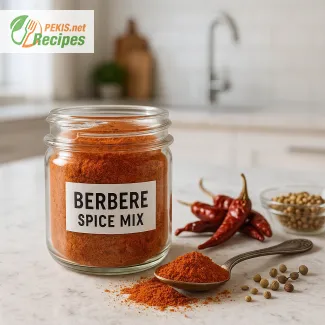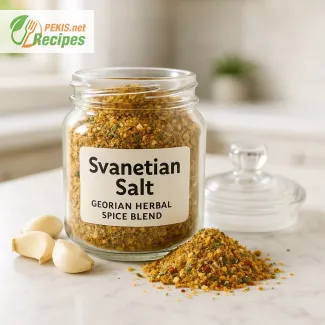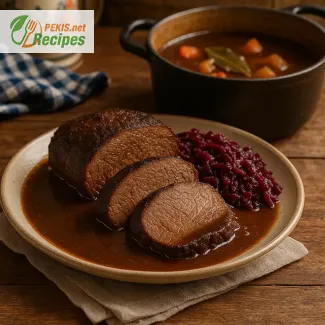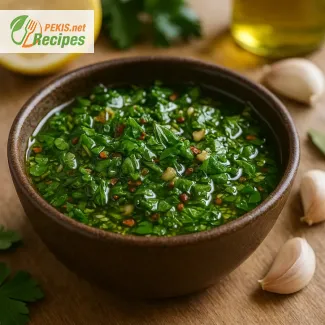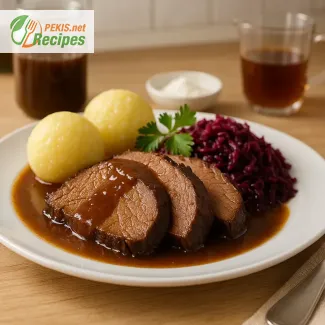
Discover the Rich Flavors of Germany’s Most Beloved Marinated Roast
A heartwarming dish rooted in centuries of culinary tradition
There are few dishes as deeply connected to German culinary heritage as the Sauerbraten—a tender, richly marinated roast that embodies the soul of traditional home cooking. With its deeply flavorful profile, slightly tangy edge, and melt-in-your-mouth texture, Sauerbraten is more than just a meal; it's a cultural experience passed down through generations.
Originating in the Rhineland region, Sauerbraten was historically a way to make tougher cuts of meat delicious and tender, through days of careful marinating in a mixture of vinegar, wine, herbs, and spices. Over time, the dish evolved into a celebratory centerpiece—served during holidays, family gatherings, and Sunday dinners—reflecting not just its culinary appeal but also its emotional resonance within German households.
What makes Sauerbraten so exceptional is its balance. The acidity of the marinade, countered by the sweetness of ingredients like raisins or gingersnap cookies, creates a deeply satisfying contrast. This harmony of sweet and sour, of soft and savory, is what gives Sauerbraten its unmistakable character. Every bite tells a story—of patience, of craftsmanship, and of tradition.
While often associated with beef, variations of Sauerbraten across Germany feature venison, lamb, pork, or even horse meat in some historical renditions. However, the beef version remains the most iconic, especially when paired with traditional side dishes like red cabbage, potato dumplings (Kartoffelklöße), or buttered spaetzle.
The beauty of this recipe lies in the marinating process. It demands time, yes—but rewards the patient cook with layers of complex flavor that simply can’t be rushed. This is slow food at its finest, where transformation occurs not just on the stovetop, but over days of anticipation. It’s the kind of recipe that fills your kitchen with aromas long before the meal is served, building expectation and appetite with every hour.
Sauerbraten's unique profile and rich history make it a perfect dish to explore for those seeking a taste of authentic German cooking. Whether you're discovering it for the first time or reconnecting with memories of meals shared with family, preparing Sauerbraten at home is a satisfying culinary journey. The process itself—choosing your cut of meat, preparing the marinade, letting it rest, and finally, slow-cooking it to perfection—is deeply immersive and rewarding.
Beyond its cultural roots, Sauerbraten is also surprisingly versatile. The flavor can be fine-tuned depending on your preferred balance of acidity and sweetness. Some prefer a heavier red wine base, others a stronger vinegar note. In Bavaria, the sauce may be darker and richer, while in the Rhineland, the addition of sweeteners like apple butter or molasses is more common. These regional nuances are a testament to how deeply embedded the dish is within Germany’s diverse culinary landscape.
Serving Sauerbraten is more than just placing a roast on the table—it's about crafting a memorable experience. Garnish it with freshly chopped parsley, serve it with traditional accompaniments, and pair it with a robust German red wine or a dark beer for a complete and unforgettable meal.
As global interest in traditional European cuisine grows, Sauerbraten has found its place in home kitchens far beyond Germany. For lovers of comfort food, slow-cooked meals, and bold flavors, it offers a deeply satisfying alternative to standard roast dishes.
So, whether you're preparing it for a holiday feast, a cozy winter evening, or simply to try something new, Sauerbraten stands out as a dish worth mastering. Its aromatic depth, velvety sauce, and succulent meat make it not just a meal—but an experience to savor. Stay tuned for the full recipe and step-by-step instructions, and let this timeless classic bring the heart of German cooking into your home.
Step 1: Prepare the marinade
In a large pot, combine red wine, vinegar, water, onion, carrot, celery root, bay leaves, juniper berries, peppercorns, cloves, salt, and sugar. Bring to a simmer over medium heat, then let cool completely.
Step 2: Marinate the beef
Place the beef roast in a large ceramic or glass container. Pour the cooled marinade over the meat, ensuring it is fully submerged. Cover and refrigerate for 72 hours (3 days), turning the meat once a day.
Step 3: Remove and dry the beef
After marinating, remove the beef from the liquid and pat it dry with paper towels. Strain the marinade and reserve the liquid and vegetables separately.
Step 4: Sear the beef
In a heavy pot, heat sunflower oil over medium-high heat. Sear the beef on all sides until well-browned. Remove the roast and set aside.
Step 5: Sauté vegetables and deglaze
In the same pot, add the reserved vegetables from the marinade and sauté until softened and slightly caramelized. Deglaze with 250 ml (1 cup) of the reserved marinade and 250 ml (1 cup) of beef broth.
Step 6: Braise the meat
Return the beef to the pot. Add raisins and crushed gingerbread cookies. Cover and simmer on low heat for 2.5 hours, turning the meat occasionally, until tender.
Step 7: Make the sauce
Remove the beef and keep warm. Strain the sauce, pressing the solids to extract flavor. Return the liquid to the pot and bring to a boil. Mix cornstarch with a little cold water to make a slurry, then stir into the sauce to thicken. Simmer 5 minutes until glossy and slightly thickened.
Step 8: Serve
Slice the beef and serve with the sauce. Recommended side dishes: red cabbage, potato dumplings, or spaetzle.
Elevating Sauerbraten: Enhancing a Classic German Pot Roast
Tips and tweaks to refine flavors and improve texture in this timeless dish
Few traditional meals carry the heritage and depth of flavor that Sauerbraten does, but even a beloved classic leaves room for creative improvement. Whether you’re looking to elevate the taste, adjust for dietary preferences, or simply add a personal touch, small changes can yield impressive results. This guide explores thoughtful ways to refine and customize Sauerbraten without losing the essence of what makes it such a cherished dish.
Understanding the flavor balance: acid, sweet, and umami
Sauerbraten stands out due to its bold marinade, combining acidic and sweet components that break down the meat fibers while imparting deep, tangy flavor. By tweaking this marinade, you can control the intensity of the sourness and create a more nuanced dish.
Adding more red wine (and slightly reducing vinegar) will make the flavor softer and rounder, enhancing the umami depth while maintaining acidity. Using aged balsamic vinegar instead of standard wine vinegar adds complexity and a hint of sweetness, perfect for a richer result.
For a deeper flavor profile, consider introducing a few dried prunes or figs into the marinade. These fruits slowly release sweetness and body into the liquid, which transforms the sauce into a velvety glaze with fruity undertones that contrast beautifully with the tanginess.
Fresh vs. store-bought: the case for homemade ingredients
Preparing Sauerbraten from scratch ensures complete control over ingredients and quality. Homemade beef broth rather than bouillon or store-bought stock will give your gravy a richer and more authentic base. Similarly, using homemade gingerbread cookies allows you to adjust spices and sugar levels to complement your preferred balance of savory and sweet.
Even the choice of meat makes a difference. While beef rump is traditional, switching to chuck roast offers a more marbled texture and superior tenderness after braising. If you're seeking something more luxurious, short ribs create a richer mouthfeel and intensify the sauce's flavor due to their collagen content.
Avoiding common mistakes in preparation
One of the most frequent errors is marinating the beef for too short a time. The real depth of Sauerbraten comes from a minimum of three days in marinade, ideally turning the meat daily to ensure even flavor absorption. Rushing this process leads to a dish that lacks character and can result in uneven texture.
Another pitfall is overcooking or undercooking the roast. The beef should reach fork-tender consistency, but not fall apart. To achieve this, maintain a gentle simmer rather than a boil throughout the braising phase, and always allow the meat to rest before slicing.
Many cooks also skip straining and refining the sauce. A silky, smooth sauce is key to Sauerbraten’s elegance. Strain the vegetables, press them to extract juices, and always take the time to reduce the sauce for maximum flavor concentration.
Healthier versions without sacrificing taste
For those mindful of nutrition, there are effective ways to lighten the dish. Swap the gingerbread cookies for a gluten-free oat biscuit or whole-grain cracker with similar spice notes. You can also thicken the sauce using arrowroot or potato starch instead of cornstarch, which some find difficult to digest.
If you're reducing sugar intake, replace raisins or cookies with finely chopped dates or unsweetened apple purée for a natural sweetness that still complements the sour components.
Vegetable-rich versions can increase nutritional value. Adding roasted parsnips or turnips into the braising liquid introduces subtle sweetness and earthiness, enhancing the sauce without overpowering the roast.
Modern twists for flavor enhancement
To introduce a contemporary spin, try infusing the marinade with smoked paprika, star anise, or a splash of dark beer. These additions deepen the flavor, layering smokiness and spice in a way that still respects the traditional foundation.
Experimenting with wine varieties can also bring surprising results. A dry red like Spätburgunder (German Pinot Noir) offers elegance, while a fuller-bodied Zinfandel introduces a bolder, jammy profile. These choices subtly shift the overall dish without undermining its identity.
Finishing the gravy with a spoon of cold butter adds silkiness and a gourmet touch that elevates the presentation and mouthfeel.
Why homemade Sauerbraten will always be superior
Cooking Sauerbraten at home allows for customization, quality assurance, and the use of fresh, high-grade ingredients. The care involved in each step—selecting the meat, preparing the marinade, watching over the slow braise—transforms a recipe into a labor of love. This personal connection to the dish results in a more flavorful, meaningful meal than any store-bought or restaurant version can offer.
Moreover, serving Sauerbraten in your own kitchen means it becomes a family tradition, a centerpiece around which memories are built. The aroma alone creates anticipation and nostalgia, long before the first bite is taken.
The final word: balance, patience, and quality
Improving a traditional recipe like Sauerbraten isn't about reinventing it—it's about understanding its core components and refining them with intention and skill. From balancing acidity with sweetness, to choosing better meat cuts, and enhancing the sauce with subtle flavors, each decision brings you closer to a perfectly personalized pot roast.
Approach the process with patience, respect the original, and embrace innovation in small, thoughtful ways. Your version of Sauerbraten may soon become the one others try to replicate.
This recipe contains gluten (from gingerbread cookies) and sulfites (from red wine).
Allergen-free substitutions: Use gluten-free gingerbread cookies and ensure the red wine is sulfite-free or organic.
- Vitamin B12: 2.4 µg – supports red blood cell formation and neurological health
- Iron: 4.5 mg – essential for oxygen transport in blood
- Zinc: 6.2 mg – contributes to immune function and wound healing
- Vitamin A: 620 µg – important for vision and immune support
- Vitamin K: 35 µg – aids in blood clotting and bone health
- Potassium: 560 mg – regulates fluid balance and nerve signals
- Polyphenols (from red wine and spices): 120 mg – reduce inflammation and support cardiovascular health
- Beta-carotene (from carrots): 3.5 mg – antioxidant that protects against cellular damge
- Flavonoids (from raisins and onion): 90 mg – linked to reduced oxidative stress and improved heart health
